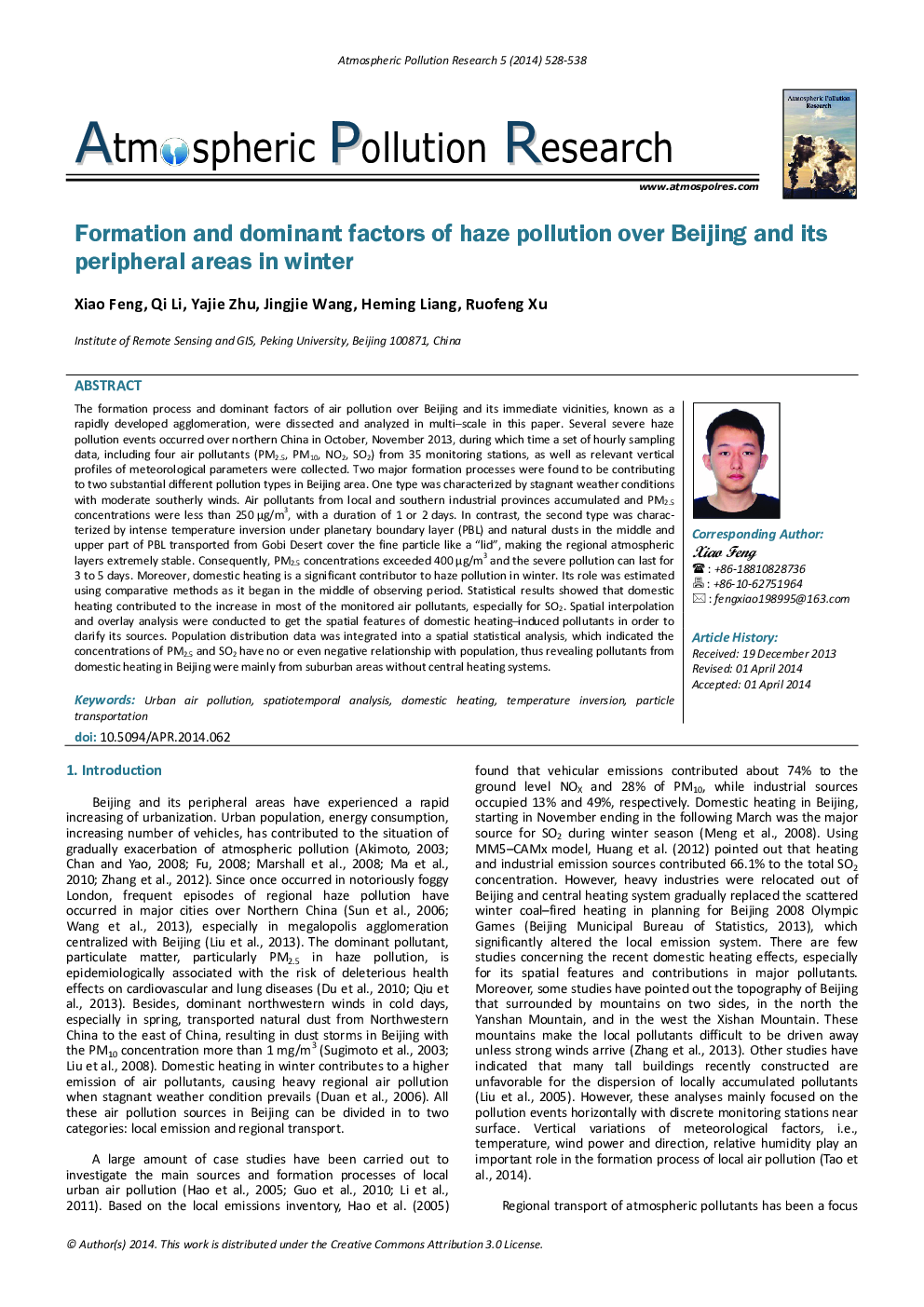| کد مقاله | کد نشریه | سال انتشار | مقاله انگلیسی | نسخه تمام متن |
|---|---|---|---|---|
| 4434623 | 1310519 | 2014 | 11 صفحه PDF | دانلود رایگان |
The formation process and dominant factors of air pollution over Beijing and its immediate vicinities, known as a rapidly developed agglomeration, were dissected and analyzed in multi–scale in this paper. Several severe haze pollution events occurred over northern China in October, November 2013, during which time a set of hourly sampling data, including four air pollutants (PM2.5, PM10, NO2, SO2) from 35 monitoring stations, as well as relevant vertical profiles of meteorological parameters were collected. Two major formation processes were found to be contributing to two substantial different pollution types in Beijing area. One type was characterized by stagnant weather conditions with moderate southerly winds. Air pollutants from local and southern industrial provinces accumulated and PM2.5 concentrations were less than 250 μg/m3, with a duration of 1 or 2 days. In contrast, the second type was characterized by intense temperature inversion under planetary boundary layer (PBL) and natural dusts in the middle and upper part of PBL transported from Gobi Desert cover the fine particle like a “lid”, making the regional atmospheric layers extremely stable. Consequently, PM2.5 concentrations exceeded 400 μg/m3 and the severe pollution can last for 3 to 5 days. Moreover, domestic heating is a significant contributor to haze pollution in winter. Its role was estimated using comparative methods as it began in the middle of observing period. Statistical results showed that domestic heating contributed to the increase in most of the monitored air pollutants, especially for SO2. Spatial interpolation and overlay analysis were conducted to get the spatial features of domestic heating–induced pollutants in order to clarify its sources. Population distribution data was integrated into a spatial statistical analysis, which indicated the concentrations of PM2.5 and SO2 have no or even negative relationship with population, thus revealing pollutants from domestic heating in Beijing were mainly from suburban areas without central heating systems.
Journal: Atmospheric Pollution Research - Volume 5, Issue 3, July 2014, Pages 528–538
